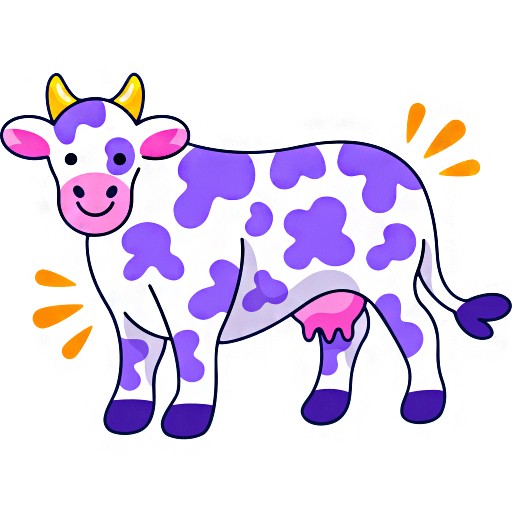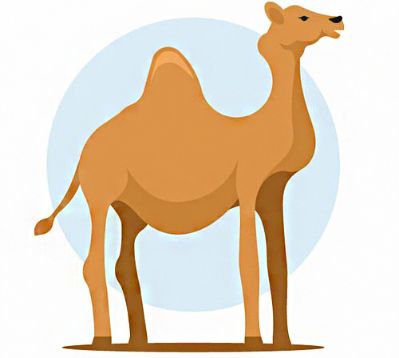Habitats and Feeding Habits of Animals for Class 3 Science
Animals eat either plant material or flesh of other animals. As per their natural food, the animals are categorised in different groups. Animals live in different habitats that suits them. In this concept, the young learners will know more about types of animal habitat and their feeding habits.
After reading the concept, students will be able to:
- Explain food and feeding habits of animals.
- State difference between carnivorous and herbivours animals.
- Determine whether a crow is carnivore or omnivore.
- Answer which animals are called terrestrial animals.
Each concept is explained to class 3 students using descriptions, illustrations, and concept maps. After you go through a concept, assess your learning by solving the two printable worksheets given at the end of the page.
Download the worksheets and check your answers with the worksheet solutions for the concept Habitats and Feeding Habits of Animals provided in PDF format.
Feeding Habit:
The feeding habits of animals refer to the types of food they eat. Different animals have different food preferences, and based on this factor, animals can be broadly grouped into four categories.
Feeding Habits of Animals:
1.Herbivores:
Animals who feed only on plants are called herbivorous animals or herbivores.


- Herbivores like cows, horses, and goats have sharp front teeth to cut through leaves, barks, and stems of plants and broad flat teeth at the back of the mouth for chewing the food.
- Some herbivores, such as cows, can bring back previously swallowed food to their mouth for chewing it the second time.
- Squirrels have broad, sharp front teeth in each jaw, which they use to gnaw foods like nuts.
_20250130_114820.jpeg)
2.Carnivores:
Animals who eat the flesh of other animals are called carnivorous animals or carnivores.
Example : Lion, tiger, crocodile, snake, etc.
_20250130_114943.jpeg)
_20250130_115046.jpeg)
- The front teeth of carnivores like tigers and lions are sharp and pointed, which helps them tear flesh.
_20250130_115113.jpeg)
- Carnivorous insects have long and sticky tongues to catch other small insects.
- Snakes swallow their prey as a whole due to the absence of teeth suitable for chewing.
_20250130_115215.jpeg)
3.Omnivores
Animals eating both plants and animal-based products are called omnivorous animals or omnivores.
_20250130_115322.jpeg)
_20250130_115427.jpeg)
- Omnivores possess different types of teeth that help them eat both plants and the flesh of other animals.
- Omnivorous birds like crows have sharp and pointed beaks that help them eat various kinds of food.
4.Scavengers:
Animals who feed on the dead flesh of other animals are called scavengers.
_20250130_115515.jpeg)
_20250130_115607.jpeg)
Habitats of Animals:
- A habitat is the place where an animal lives.
- Depending on the habitat, an animal acquires specific characteristics and habits.
- The habitat provides food, water, shelter, and space to survive and give birth to young ones.
_20250130_115658.jpeg)
Types of Animal Habitat:
- Terrestrial Animals:
- Animals living on the land belong to the terrestrial habitat and are called terrestrial animals.
Examples: Lions, tigers, zebra, giraffes, wolves, deer, hyenas, etc. - Terrestrial habitats include grassland, deserts, mountains, polar regions, etc.
- Terrestrial animals have legs to walk on the land surface. They have fur on their bodies which protects them from harsh weather conditions and keeps them warm.
- Animals living in polar and snow-covered mountainous regions have thick white fur to survive the cold.
Examples: Snow leopard, polar bear, etc.
_20250130_115742.jpeg)
- Animals found in the desserts require very less water and can store large quantities of water in their bodies. They remain active at night to avoid the harsh sunlight during the day.
Example : Camel, meerkat, etc.
_20250130_115813.jpeg)
- Animals in grasslands prefer to stay in groups and run fast when attacked by a predator.
Example : Deer, zebra, etc.
.jpeg)
2.Aquatic Animals:
-
- Animals living in the water belong to the aquatic habitat and are called aquatic animals.
- They live in freshwater (rivers, ponds, and lakes) or saltwater (oceans, seas, and creeks).
- They have fins to move and swim underwater.
- They breathe through their gills.
- Aquatic animals have a particular type of body shape that helps them swim through water.
Example : All kinds of fish, whales, dolphins, jellyfish, etc.
.jpeg)
.jpeg)
3.Aerial Animals:
-
- Animals that can fly are called aerial animals.
- Their bodies are covered with feathers, and they have wings that enable them to fly.
- Aerial animals have hollow bones and strong wing muscles that help them fly smoothly.
Example : Birds like sparrows, pigeons, parrots, eagles, vultures, hummingbirds, etc., flying squirrels, bats, etc.
.jpeg)
.jpeg)
4.Arboreal Animals:
-
- Animals living on trees are called arboreal animals.
- These animals have strong limbs to climb up the branches of the trees.
- Many of these animals have long tails that help them hang from the branches.
- Tree frogs have sticky pads on their feet to climb up and down trees.
Example : Monkeys, tree frogs, squirrels, some lizards, some snakes, etc.
.jpeg)
.jpeg)
New Words:
Gnaw: The habit of biting or chewing something continuously is called gnawing.
Predator: An animal who hunts and kills other animals for food.
Gills: The organs in aquatic animals that help take in oxygen from water and expel the carbon dioxide in the surroundings.
Did You Know?
- Herbivores can be classified into different groups based on the plant-based food they eat— frugivores (those who eat fruits), granivores (those who eat seeds), nectarivores (those who feed on nectar), and folivores (those who eat leaves).
- Bees and butterflies have a long tube to suck nectar from plants.
- Giraffes use their long necks, and elephants use their trunk to take in food.
.jpeg)

